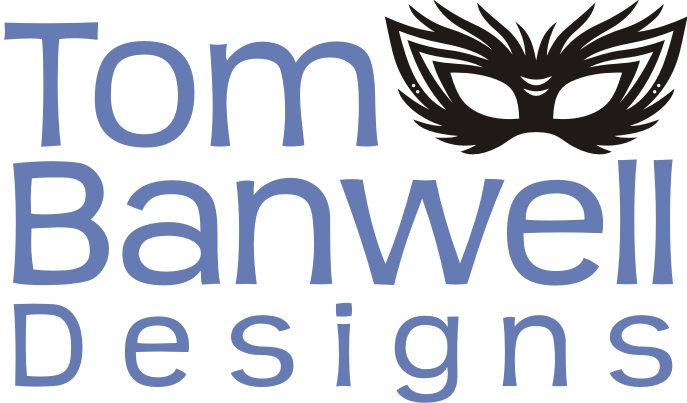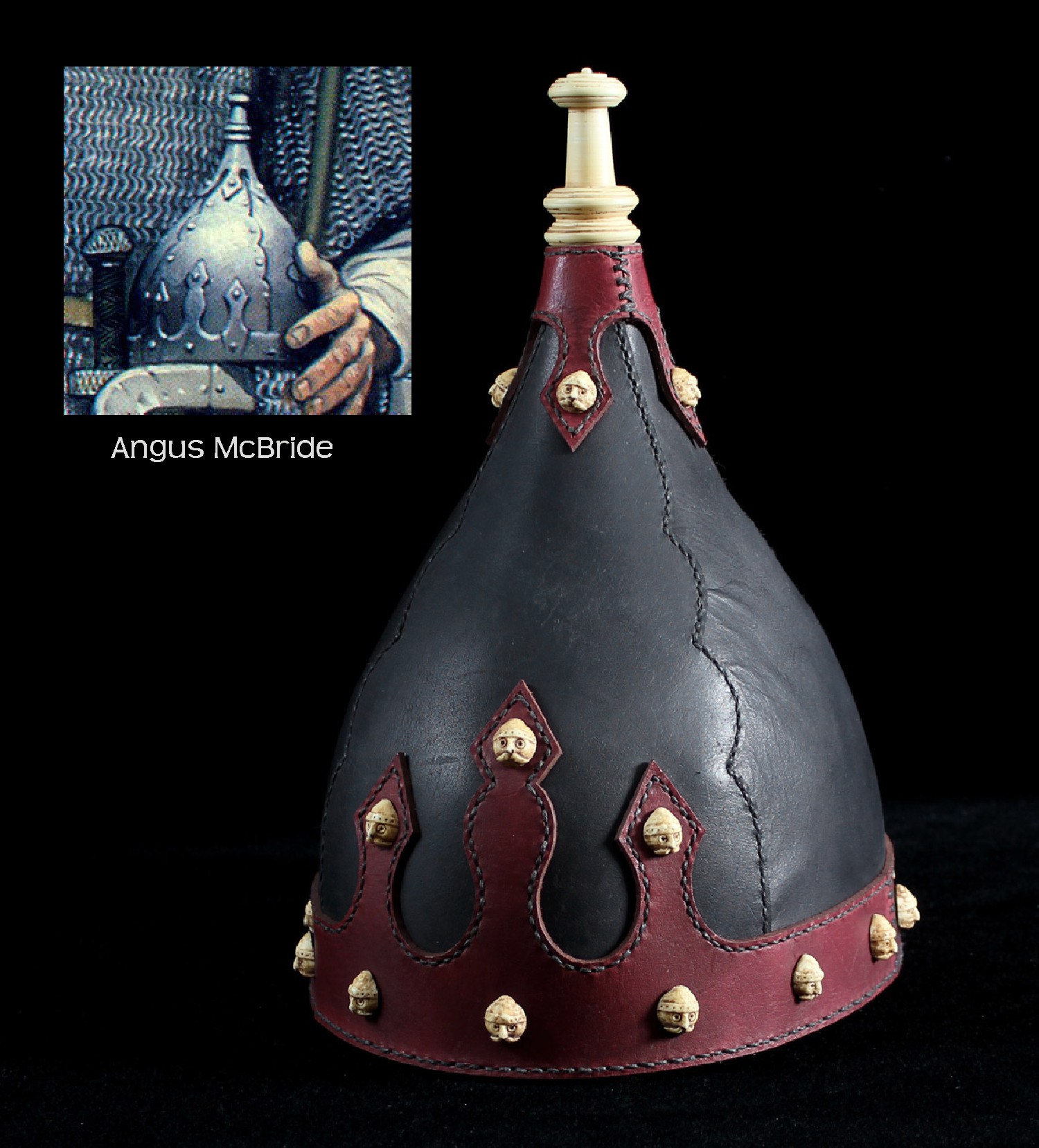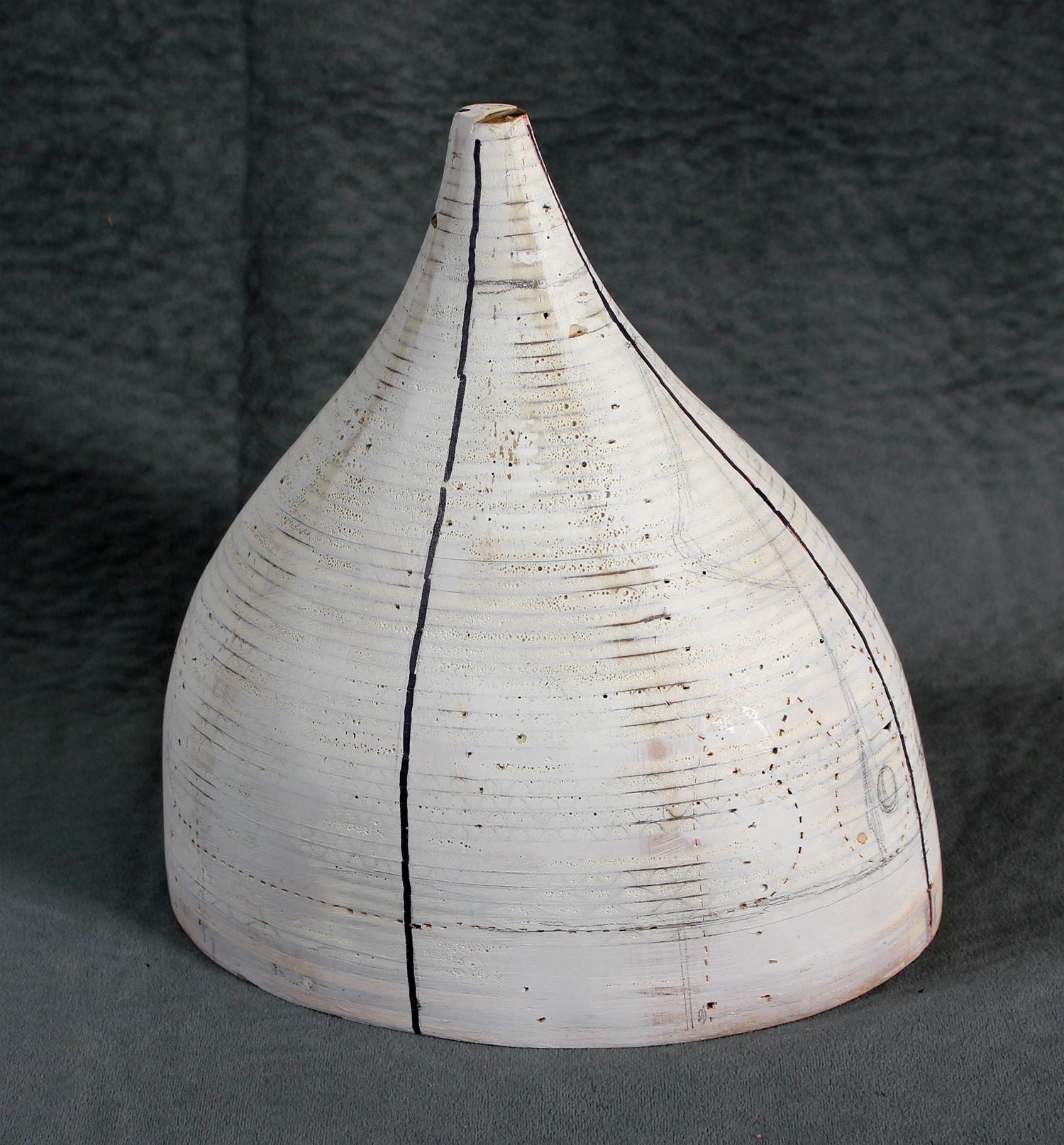Rus Viking Helmet
Not really a tutorial, but I share each step that I took.
This helmet is based on a painting (shown above inset) by Angus McBride, and is the cover art for The Vikings by Ian Heath, published by Osprey Publishing.
The helm has been made of top grain vegetable tanned cowhide in a 5/6 oz. weight. First the hat form was made. I used CorelDraw (a computer graphics program) to determine the length and width of each layer of the form, then made ellipses to match each layer. From these I cut individual pieces of corrugated cardboard, and glued them together to get the rough form. After that I coated the form with auto body putty, and smoothed it all out.
Next I marked out my pattern on the hat form. This helm has four body pieces (front, back, and two sides), two band pieces (front and back, which are identical), and two top pieces (also identical). I covered the form with duct tape, and marked the pattern pieces on the tape. Then using an X-acto knife, I cut out each pattern piece. From there I transferred the pattern to the leather, and cut out each one.
Then--a very important step--I soaked the leather pieces in water, and let them dry out slightly (this is called casing, and makes the leather malleable). I then draped each of the four body pieces--two at a time--over the hat form and allowed them to dry to shape. Once dry, I overlaid the front and back pieces over the two side pieces, and carefully punched the lacing holes with a lacing fork and awl. The cardboard hat form easily allows an awl to penetrate it.
The next step is to dye the leather pieces. I made the four body pieces black, and the band and top pieces maroon. Once dry, the pieces are ready to be stitched together with waxed thread and an appropriate needle. Then I attached the faux ivory buttons that I made, along with the top piece which I turned on a lathe.
The only thing left was to make the sweatband and liner, and glue them in. The picture of the inside of the helm--with cloth liner removed--reveals more of the construction detail. Notice that the front and back body pieces benefited by having a dart at the bottom center, which was then covered by the band. Only by looking inside can you tell that it's there.
The sweatband is adjustable, and will fit just about any size head. It is made of heavy top grain garment cowhide. The size is adjusted by tightening or loosening the leather cord. This design was taken from 19th century military helmets, and has probably been utilized for centuries.
I can't emphasize enough that the technique that is most important in making a leather helm look professional is to shape the cased leather over a hat form. It can be a bunch of work making the form, but it's worth it. For simpler shaped helms I buy a plastic hardhat at a thrift shop, and fill it with plaster. Using a Surform® or a coarse file I can further refine it's shape.
Hat Form





